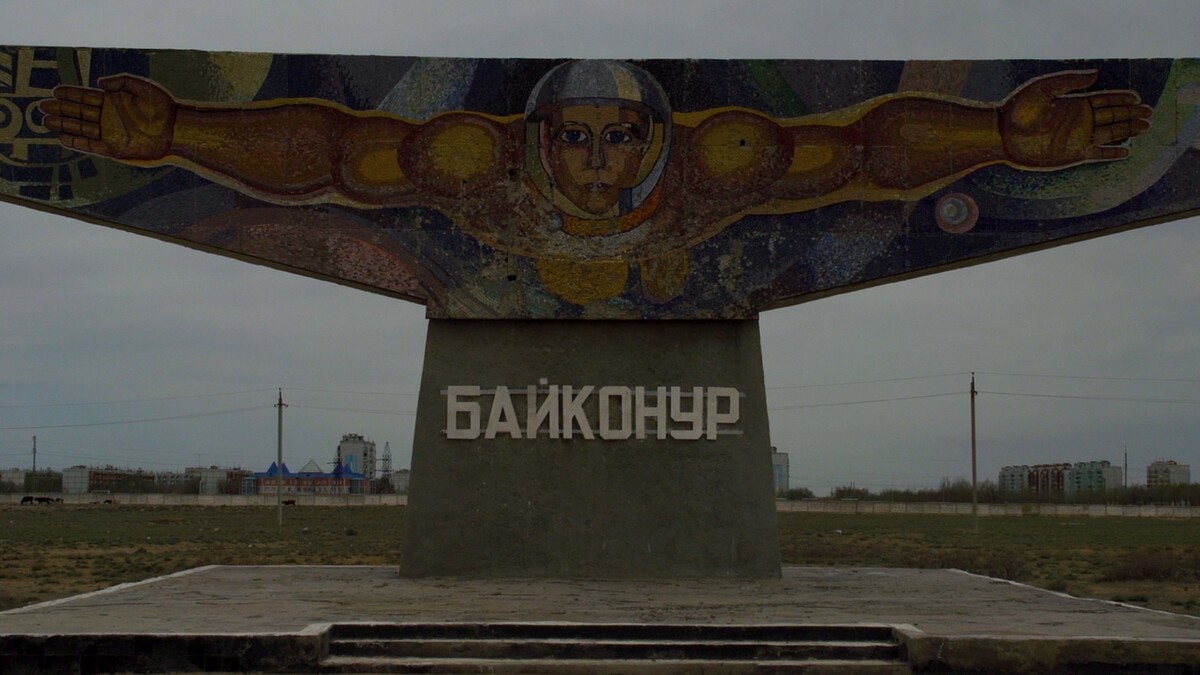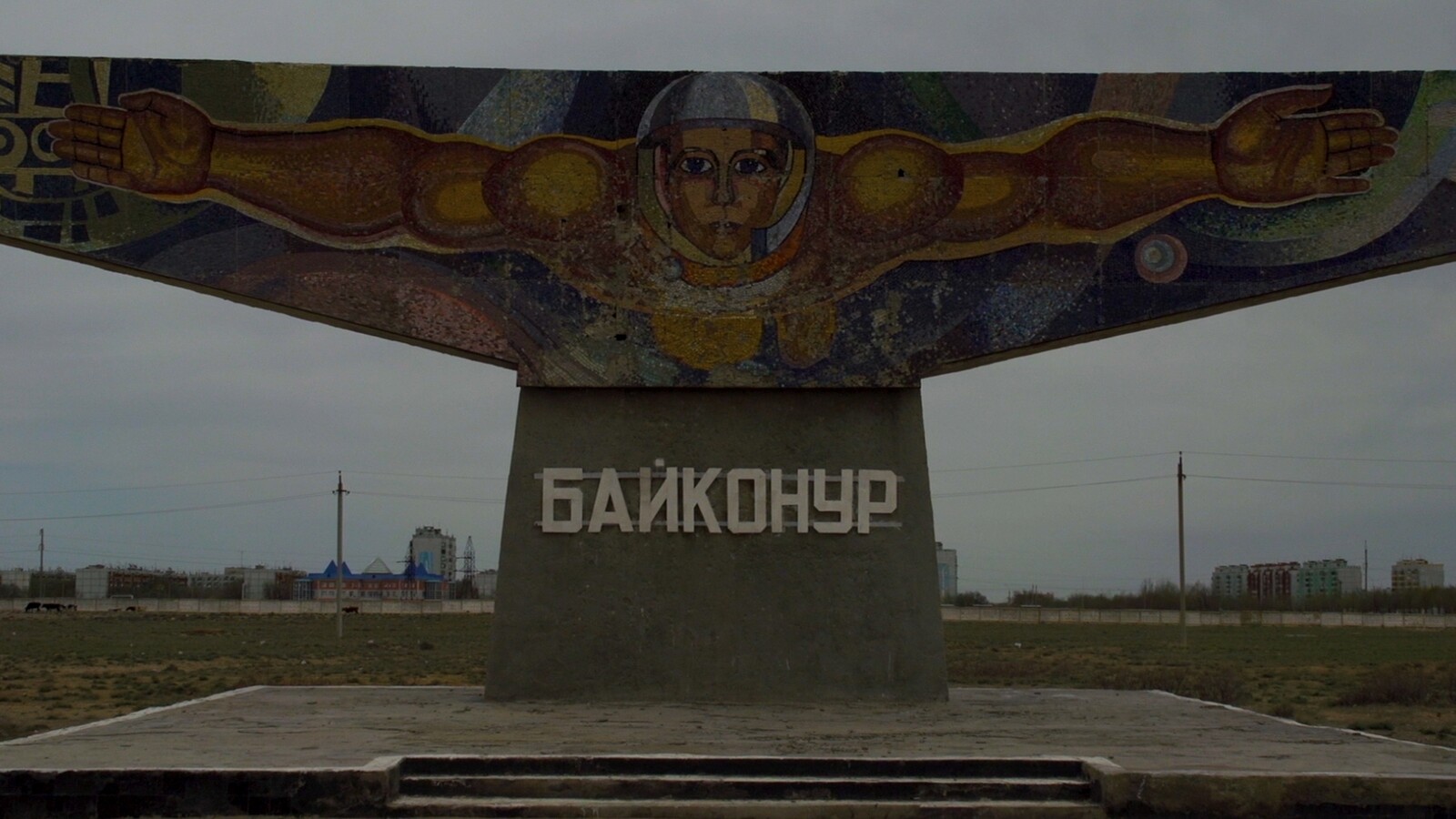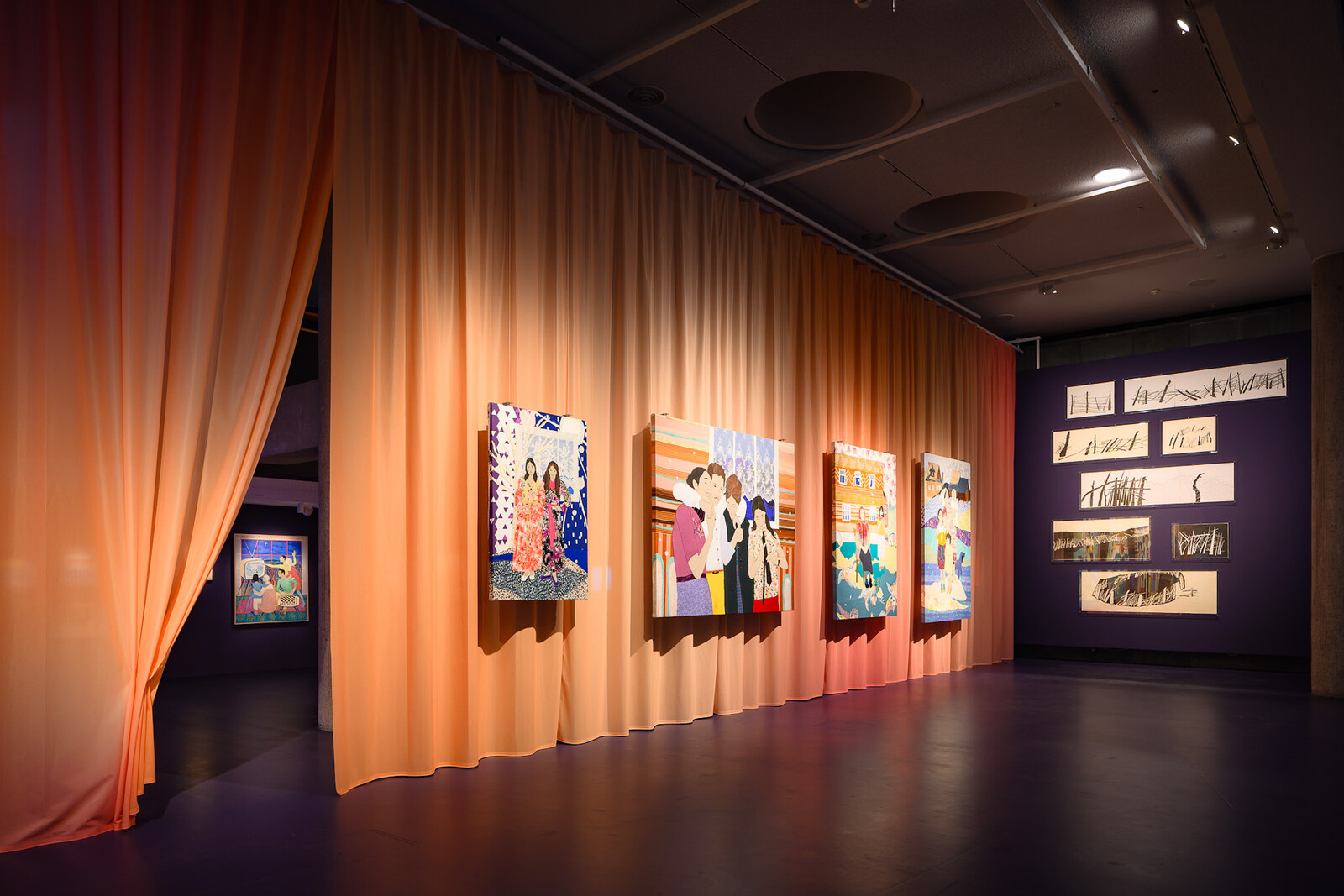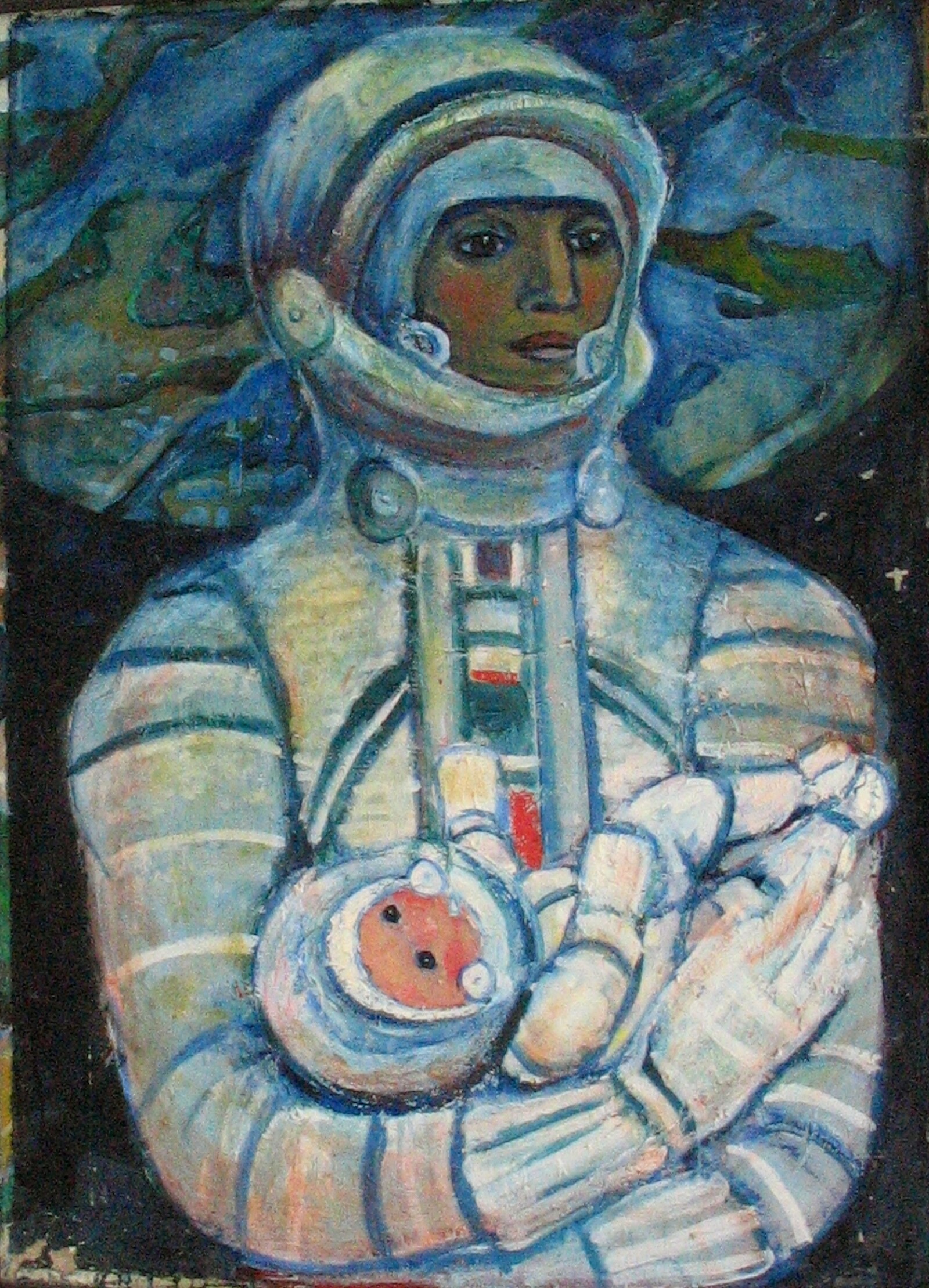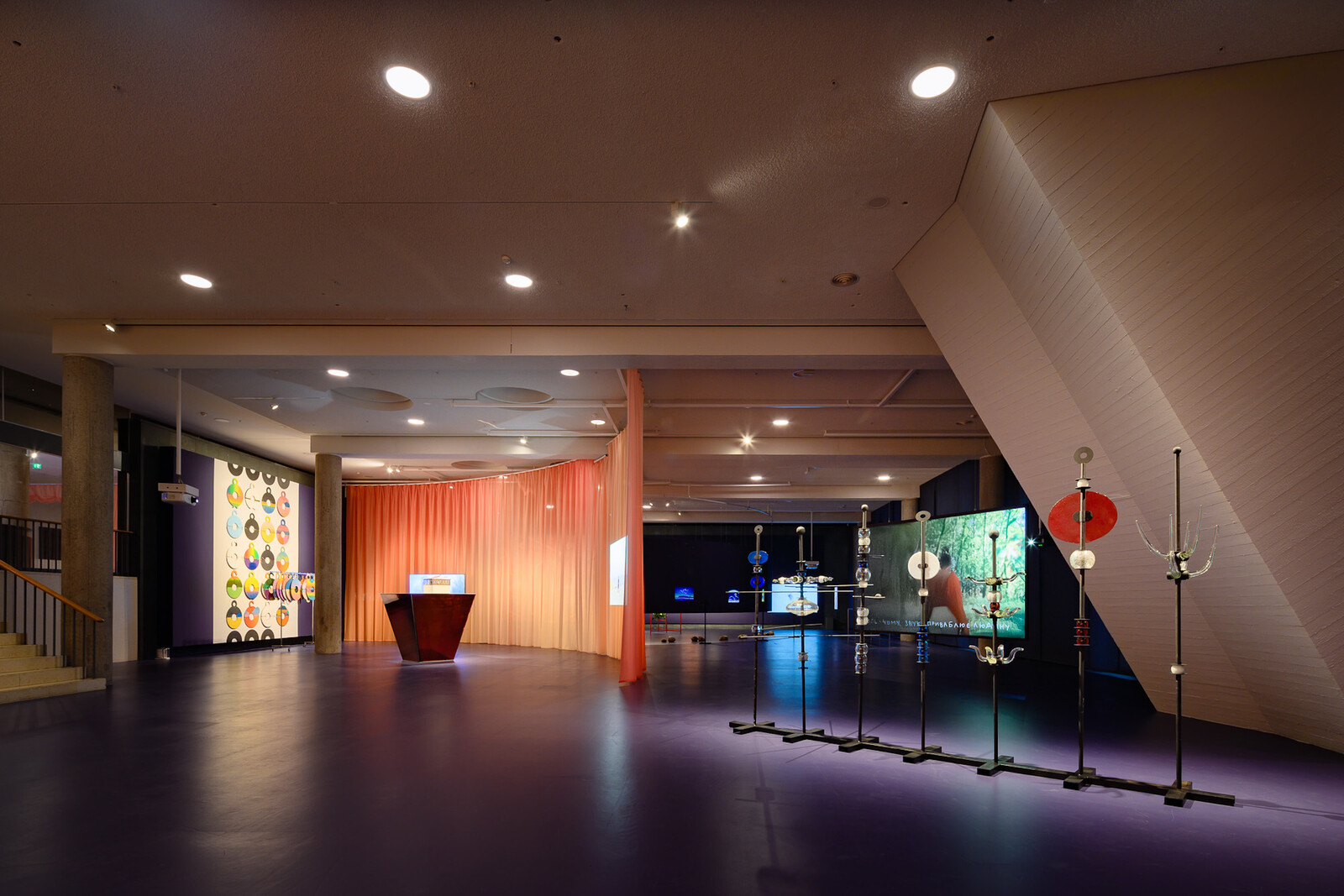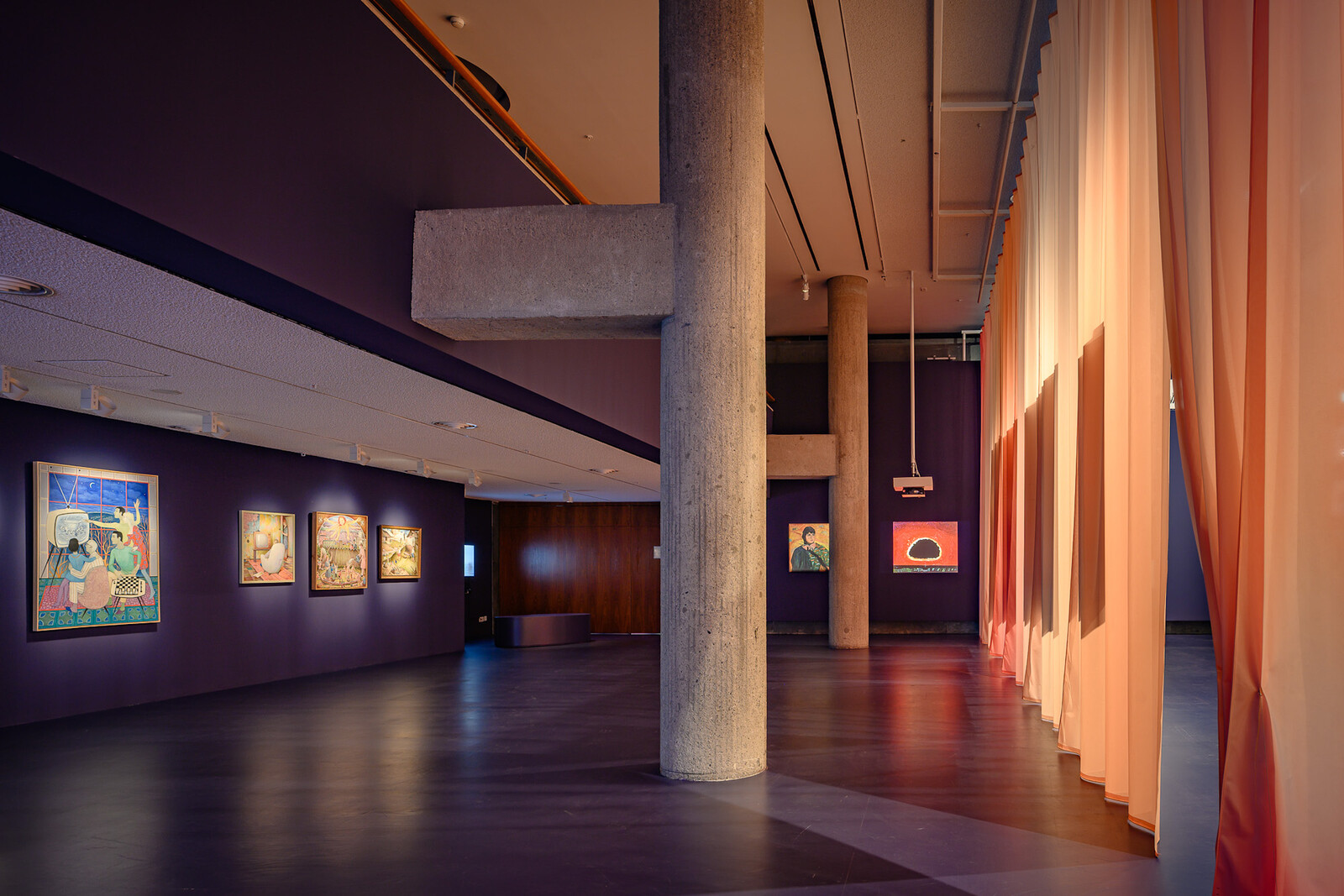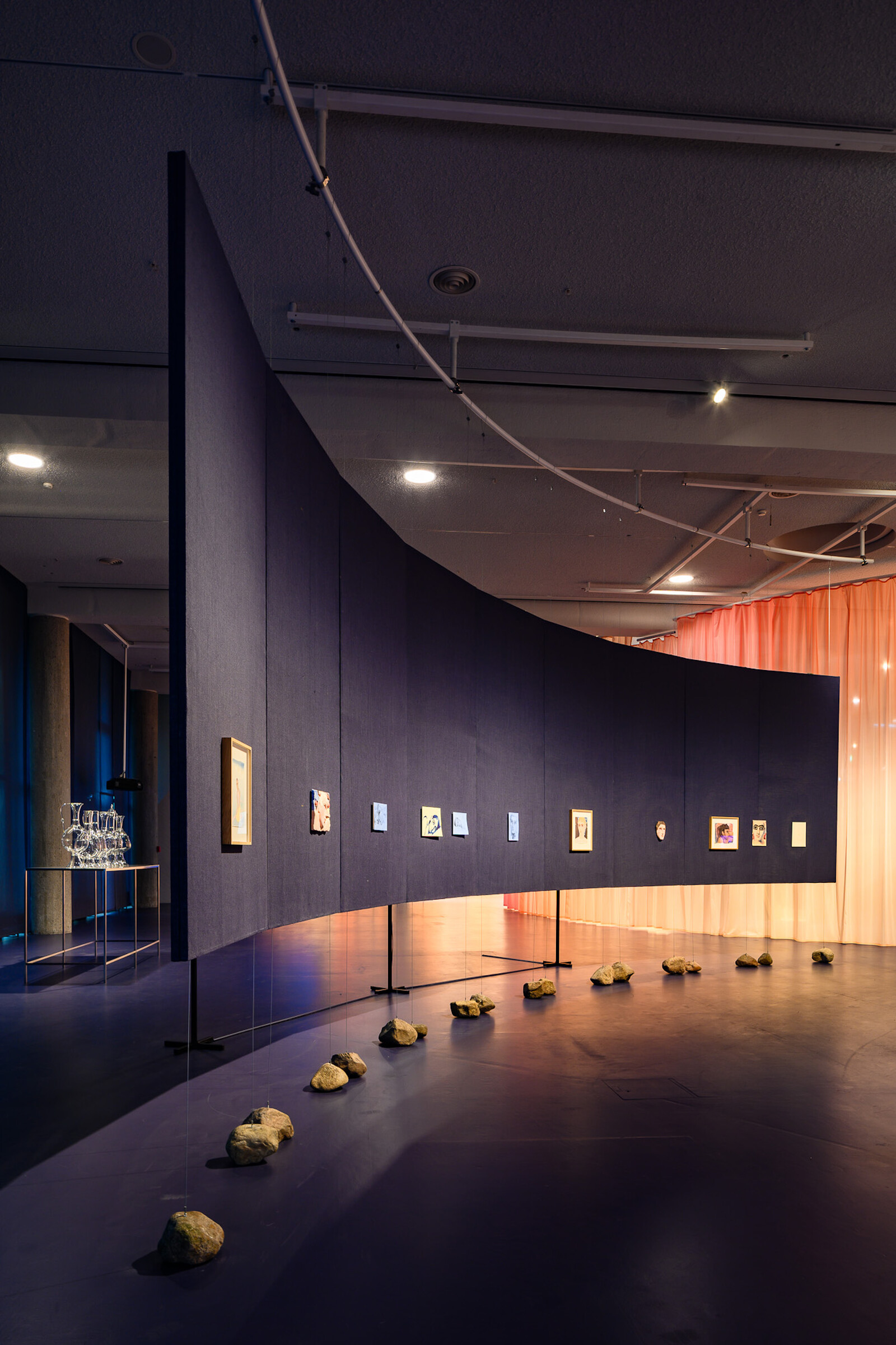Against a backdrop of constant territorial changes in the former Soviet countries and the ongoing war in Ukraine, “As Though We Hid the Sun in a Sea of Stories” explores the “geopoetics of North Eurasia.”1 The term denotes heterogeneous, yet tightly interconnected, political and cultural contexts under oppressive regimes, ranging from the Russian Empire to contemporary Russian imperialism via Soviet colonialism. Framed in the handout by HKW’s director, Bonaventure Soh Bejeng Ndikung, as a way of “being and seeing the world through the prism of the Global East,” the show tries to avoid any “totalizing vision” in favor of multiple subjectivities and geographies.
To achieve this, the show’s curators—Cosmin Costinaș, Iaroslav Volovod, Nikolay Karabinovych, Saodat Ismailova, and Kimberly St. Julian-Varnon—have scattered the artworks across the museum in a way that foregrounds their discreteness, each piece separately lit and surrounded by empty space. Stories of colonialism, resistance, and artistic experimentation are encapsulated in these “monads,” yet the aversion to a “totalizing vision” extends to the bewildering absence of wall texts from the galleries (viewers hoping for context must flip through the handbook, which lacks a general plan of the show, to find a work description).
The exhibition’s main space is filled with mysterious jingling from If not now, when? (2023), a video by Ukrainian artist Anton Kats that seeks hope in the face of wartime losses. The video is structured around successive poetic monologues by two resurrected female characters, both industrial workers killed in the explosion at the Kakhovka Dam and the shelling of Kherson Shipyard, respectively. The visual texture of Kats’s video omits any direct or indirect references to the first-hand accounts of the conflict in Ukraine, arguably the most documented war in the history of the former Eastern Bloc. By contrast, glossy visual effects, digital animation, and the protagonists’ bright cropped workwear suggest that this image of the afterlife may also serve to commodify victimhood.
The video’s pealing soundtrack vibrates in the vessels of Untitled (2015) by Aslan Ġoisum, whose works often concern the relationship between memory and the erosion of material conditions of commemoration in relation to his Chechen background. The artist commissioned Murano glass makers to reproduce the glass water jugs that were once part of everyday life in the North and South Caucasus. These vessels were gradually phased out from the beginning of colonization of the region during the nineteenth century, and now only appear in contemporary museums or art spaces. As the decolonial scholar Madina Tlostanova has aptly observed, Ġoisum’s work explores “in what elusive and escaping images, objects, memories and sensations a culture continues to live, when it is constantly uprooted, exiled, destroyed and remodeled.”2
Another example of the subversive continuity of ex-colonial cultural artifacts, which have the power to reconfigure the past, arrives in the form of out-takes from The Color of Pomegranates (1969) by Sergey Parajanov, a poem-film on the life of the eighteenth-century Armenian singer-poet Sayat-Nova. Soviet authorities ordered the destruction of reels not included in the final cut of the film, but the workers of Armenfilm studio saved them: a gesture of silent dissidence that allowed Warsaw-based collective Fixafilm to restore the footage in 2020.3 The outtakes evince both the full extent of Parajanov’s experimentations in process and, more broadly, the tension between attempts to control cultural memory and their subversion. These outtakes are not only pieces of footage but historical artifacts. Presented here on seven flatscreens without any textual commentary, however, means this history of censorship and resistance—and its potential to offer hope—are not revealed.
Given the absence of labels or wall texts to provide viewers with contextualizing information, it’s worth dwelling on how the pieces are presented in the handbook. It does not go into much detail about Pomegranates, but rather foregrounds the outtakes’ “power to transport the viewer into a dreamlike realm,” as an example of “queer sensitivity avant la lettre.” Galina Konopatskaya’s portraits of females, meanwhile, are noted for exploring a “feminist theme.” Cosmic Mother (1970)—a depiction of the Virgin and Child as cosmonauts—is said to “subvert the male-dominated image of techno-futurism with a vision of a future filled with care.”
Leaving aside the implied equation of “feminine” with “feminist,” one wonders what the intention was in hanging Konopatskaya’s work beside Almagul Menlibayeva’s video installation The Tongue and Hunger. Stalin’s Silk Road (2023). While the former represents the official imagery of Soviet modernization, Menlibayeva searches for a way to remember one of its darkest episodes—the Kazakh famine of 1930 to ’33. Leading to the death of approximately forty per cent of the largely nomadic population of Kazakhstan, the famine was taboo in the Soviet era. The work consists of interviews with historians and the primary witness, who shares her memories during the tea ceremony. The footage returns, at intervals, to close-ups of her hand gestures: The Tongue and Hunger operates with a body as an archive that resists any colonial erasure of memory.
“As Though We Hid the Sun in a Sea of Stories” marks a turning point in the geographic orientations of HKW, which has previously been largely indifferent to the ex-Soviet contexts; yet the approach to presenting the artists’ work means their strategies remain hidden.4 Given this, it’s worth returning to the crucial distinction made by Stuart Hall in his 1990 essay “Cultural Identity and Diaspora,” in which he differentiates two understandings of cultural identity: the one reliant on origins and the other that approaches cultural identity “as a ‘production’, which is never complete, always in process.”5 The first tends to look for a shared, collective self preceding the oppression. The second emphasizes the strategies used by colonized cultures to resist and subvert, trick and carnivalize, corrupt and survive the colonial relations that determine their existence.
This exhibition seems to open up the third option: a dialectical synthesis, of sorts, of the previous two. By eluding political and cultural conflicts informing the works’ strategies—through the “monadic” display and a handbook that emphasizes works’ “glittering” qualities at the expense of historical and other contextual details—it essentializes colonial relations, as if they were just the background to individual expressions of artistic genius. This approach keeps the multiple decolonial artistic and archival trajectories paradoxically present and concealed, as though the sun were in shadow.
In an attempt to develop the geopoetics of North Eurasia, Volovod convened Space 1520, the artistic research laboratory at Garage Museum of Contemporary Art, Moscow: https://garagemca.org/en/programs/research-laboratories/space-1520. This project, which was focused on artistic decolonial strategies in the ex-Soviet countries, ended in 2022 in the midst of a national wave of institutional self-censorship that followed Russia’s invasion of Ukraine.
Madina Tlostanova, What Does It Mean to Be Post-Soviet? Decolonial Art from the Ruins of the Soviet Empire (Durham: Duke University Press: 2018), 62.
Daniel Bird, a member of Fixafilm, points out that The Color of Pomegranates’s various experiments of translating poetry into film were excluded from the final version due to the Soviet commissioning policy, so the most widely seen edition, which was circulating until the fall of the USSR, is the sharpened adaptation of Parajanov’s cut: Interview with Daniel Bird, “The Colour of Pomegranates,” Port (March 6, 2019), https://www.port-magazine.com/film/the-colour-of-pomegranates/.
An exception is the 2017 exhibition “Art Without Death: Russian Cosmism,” a show by Boris Groys, Anton Vidokle, and Arseny Zhilyaev: https://archiv.hkw.de/en/programm/projekte/2017/art_without_death_russian_cosmism/ausstellung_3/kosmismustrilogie_1.php.
Stuart Hall, “Cultural Identity and Diaspora,” in Selected Writings On Race and Difference, eds. Paul Gilroy and Ruth Wilson Gilmore (Durham: Duke University Press, 2021), 257.
